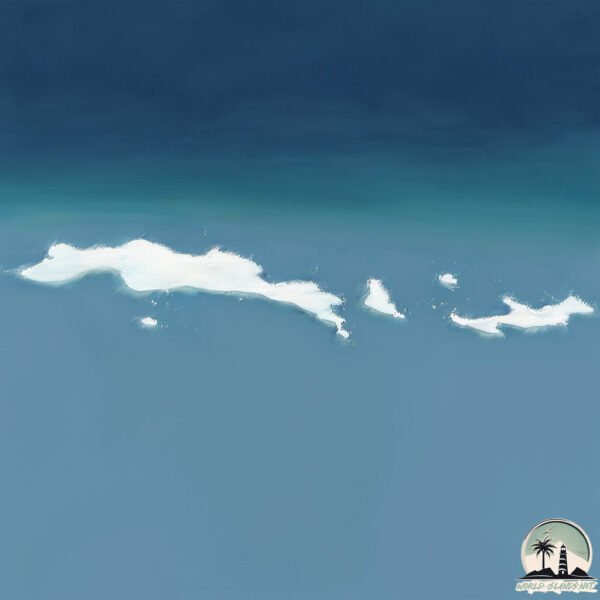Welcome to South Orkney , a Polar island in the Southern Ocean, part of the majestic Southern Ocean. This guide offers a comprehensive overview of what makes South Orkney unique – from its geography and climate to its population, infrastructure, and beyond. Dive into the details:
Geography and size of South Orkney
Size: 1.122 km²Coastline: 6.9 kmOcean: Southern OceanSea: Southern OceanContinent: Seven seas (open ocean)
South Orkney is a Small Island spanning 1.1 km² with a coastline of 6.9 km.
Archipel: –
Tectonic Plate: Scotia – Situated in the Southern Ocean, surrounding the Scotia Sea, between South America and Antarctica, known for the Scotia Arc and active seismicity.
The geographic heart of the island is pinpointed at these coordinates:
Climate and weather of South Orkney
Climate Zone: PolarClimate Details: TundraTemperature: Cold
Climate Characteristics: The tundra climate features long, extremely cold winters and short, cool summers. Vegetation is limited to mosses, lichens, and small shrubs due to the low temperatures and short growing seasons. Biodiversity is low, but some specialized species thrive.
Topography and nature of South Orkney
Timezone: UTC-03:00Timezone places: America/Sao_PauloMax. Elevation: m Mean Elevation: mVegetation: Snow and Ice CoveredTree Coverage: 19%
The mean elevation is m. The island is characterized by Mountains: High, steeply elevated landforms. Characterized by both a high maximum elevation (over 500 meters) and a high mean elevation, creating rugged, mountainous terrains on islands.
Dominating Vegetation: Snow and Ice Covered
Vegetation: 2 vegetation zones – Low Diversity Island
Infrastructure and Travelling to South Orkney
Does the island have a public airport? no .
Does the island have a major port? no .
The mean population of South Orkney is per km². South Orkney is . The island belongs to Antarctica .
Continuing your journey, Signy is the next notable island, situated merely km away.
History of South Orkney islands
These islands are located in Antarctica The population is 54 people in Summer and 14 in Winter Most people live in stations in ...
History of South Orkney islands
These islands are located in Antarctica The population is 54 people in ...
These islands are located in Antarctica The population is 54 people in Summer and 14 in Winter Most people live in stations in ...
Three Little Penguins - South Orkney Islands
A short video documenting our visit to the South Orkney Islands in the ...
A short video documenting our visit to the South Orkney Islands in the Southern Ocean, as we sailed from Antarctica to South ...
Maddie Hill's Tour Around The Orkney Islands! | BBC The Social
Maddie Hill takes us on a tour across the Orkney Islands, stopping by ...
Maddie Hill takes us on a tour across the Orkney Islands, stopping by spots including Kirkwall, Birsay, Shapinsay, Westray and ...
Antarctica is classified as Developing region: Regions characterized by lower income levels, with economies in the process of industrialization and modernization. The level of income is High income: nonOECD.
News – Latest Updates and Headlines from South Orkney
Stay informed with the most recent news and important headlines from South Orkney. Here’s a roundup of the latest developments.
Loading...
Please note: The data used here has been primarily extracted from satellite readings. Deviations from exact values may occur, particularly regarding the height of elevations and population density. Land area and coastline measurements refer to average values at mean high tide.

